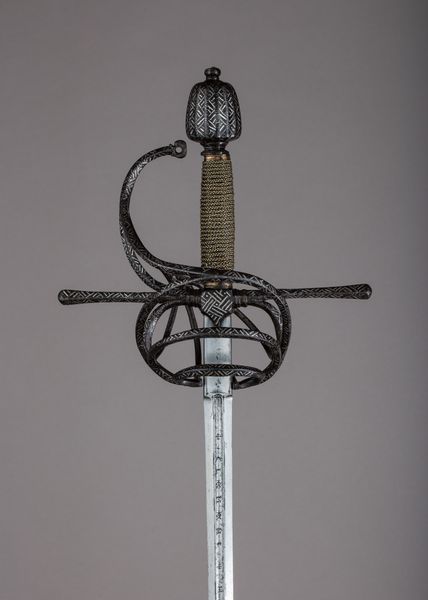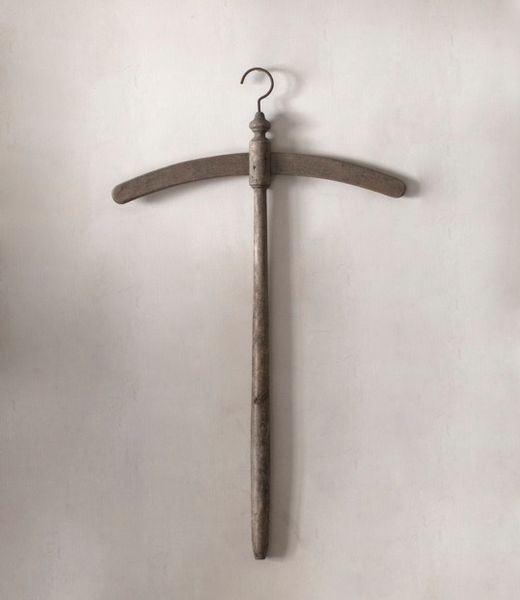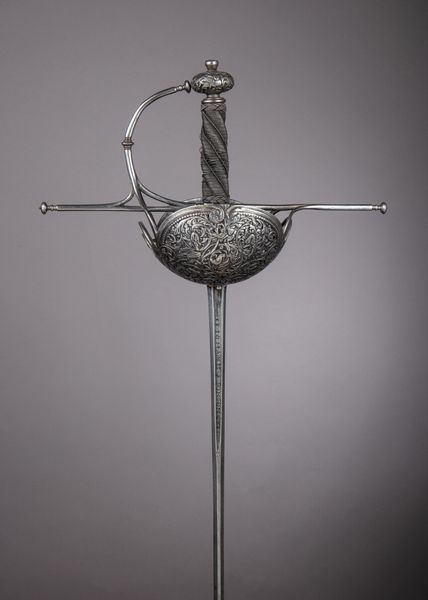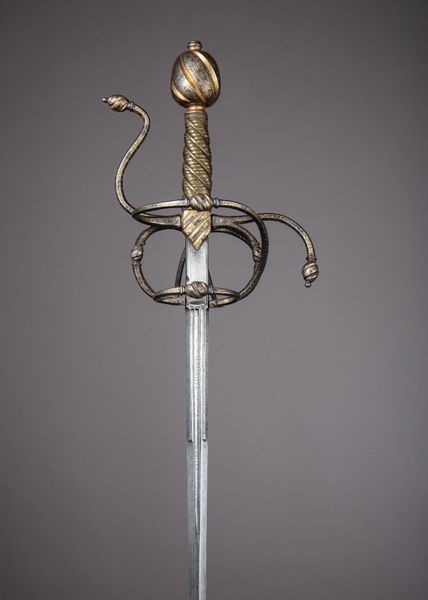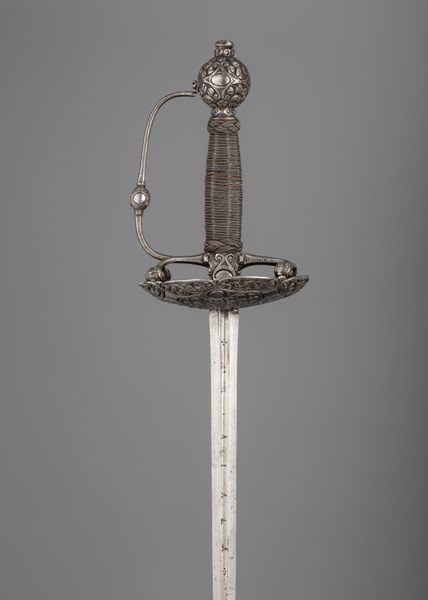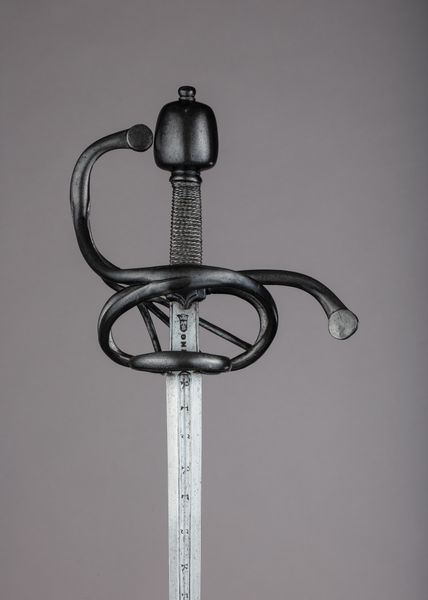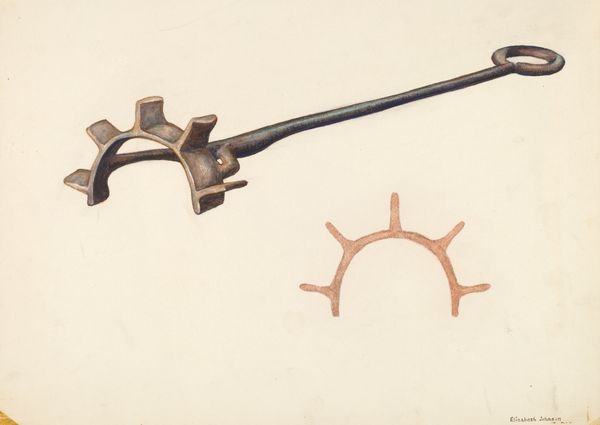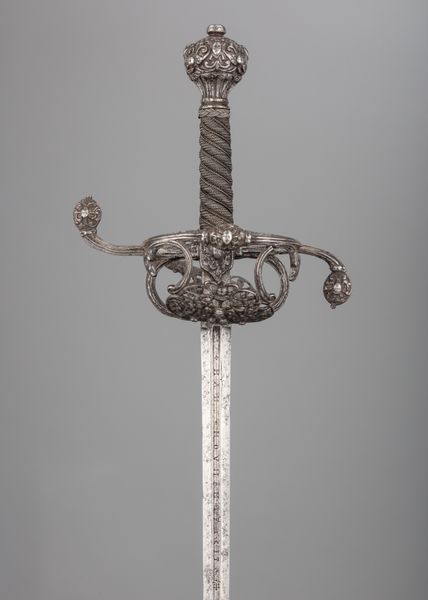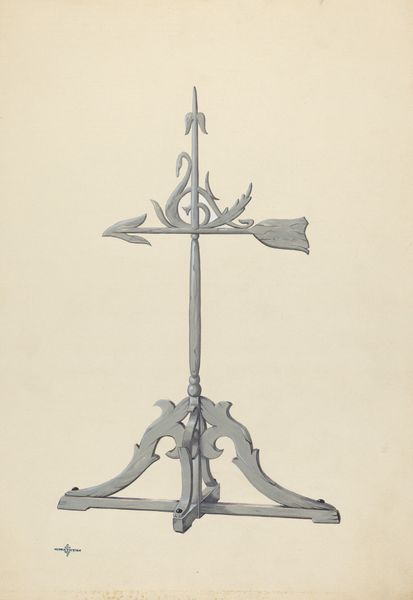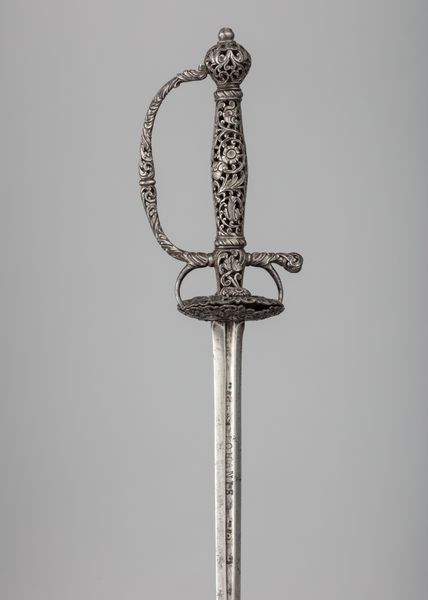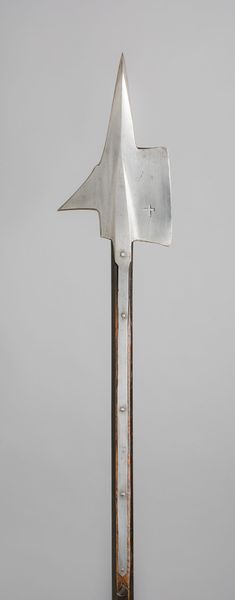
metal, textile
#
weapon
#
metal
#
asian-art
#
textile
#
japan
#
ceramic
#
history-painting
#
armor
#
decorative-art
Dimensions: H. with sheath 22 7/8 in. (58.1 cm); spear (a): H. 20 1/2 in. (52.1 cm); W. 6 in. (15.2 cm); Wt. 14.5 oz. (411.1 g); sheath (b): W. 7 1/2 in. (19.1 cm); Wt. 7.5 oz. (212.6 g); shaft (c): H. 78 in. (198 cm); Wt. 2 lb. 4.1 oz. (1023.4 g)
Copyright: Public Domain
Editor: We're looking at "Blade for a Spear (Jūmonji-yari) with Sheath," crafted in 1727 by Munemichi. The stark, silvery spearhead contrasts with the ornate, dark sheath, creating a beautiful yet unsettling feeling. What do you see in this piece beyond its functional purpose as a weapon? Curator: Beyond its martial function, this Jūmonji-yari offers a lens through which to examine the socio-political context of Edo-period Japan. The decorative arts, often perceived as separate from ‘high art,’ are deeply entwined with power, identity, and social hierarchy. The delicate swirls and shamrock crest aren't mere decoration, they represent class and the role of elite warriors, challenging us to deconstruct traditional binaries and class divisions. What assumptions do we make about objects associated with warfare versus decoration, and how can those be subverted? Editor: So the beauty is almost… subversive? It’s not just a weapon; it's communicating status and maybe even resistance to simple categorization? Curator: Precisely! And consider this: weapons like these weren’t purely tools of war. They were also symbols of authority, displayed during ceremonies. Reflect on how violence and artistry were intertwined to reinforce cultural values, the very core of identity in the ruling classes of the time. Can we reconcile the weapon's deadly purpose with its ornamental quality? Editor: I never considered that before. It reframes how I think about decorative art and how it can speak volumes about its culture. Curator: It's a potent reminder that objects embody complex histories, prompting critical examination of intersecting power structures. A battle implement, a family crest and status symbol can provide unique insights when interpreted with this historical-cultural context in mind. Editor: I definitely have a richer appreciation for it now, understanding its significance within a complex historical narrative, not just a static art object. Thanks.
Comments
No comments
Be the first to comment and join the conversation on the ultimate creative platform.
